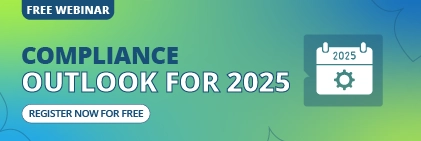In today’s complex business landscape, Australian organisations face unprecedented challenges in managing risks, ensuring compliance, and maintaining effective governance. A robust Governance, Risk, and Compliance (GRC) framework has become essential rather than optional for businesses seeking long-term sustainability and protection from potential liabilities.
With regulatory requirements continuously evolving across Australia, organisations need integrated approaches that adapt to these shifting demands.
Implementing comprehensive GRC strategies not only shields your business from potential threats but also creates opportunities for operational excellence and competitive advantage in the Australian market.
This guide explores how effective GRC strategies serve as a protective shield for your organisation, offering practical insights for Australian businesses navigating the complex compliance landscape.
What Are GRC Strategies and Why Do They Matter?
GRC strategies represent the integrated approach organisations take to align governance, risk management, and compliance activities. These three interconnected components work together to create a comprehensive framework that protects your organisation from both internal and external threats.
The core components of GRC include:
- Governance: The leadership, organisational structures, and processes that direct and control your organization
- Risk Management: The methods used to identify, assess, and mitigate potential risks to your business
- Compliance: The systems ensuring your organisation adheres to relevant laws, regulations, standards, and internal policies
For Australian businesses, GRC strategies have become increasingly critical due to several factors:
| Factor | Impact on Australian Organisations |
|---|---|
| Regulatory Complexity | Australia’s regulatory environment continues to evolve with stringent requirements across privacy, data protection, financial reporting, and workplace safety. |
| Globalisation | Australian businesses engaging internationally must navigate multiple regulatory frameworks across different jurisdictions. |
| Digital Transformation | The shift to digital operations introduces new cybersecurity and data governance challenges requiring robust protection. |
| Stakeholder Expectations | Investors, customers, and partners increasingly demand transparent governance and ethical business practices. |
Without effective GRC strategies, organisations risk severe consequences including financial penalties, reputation damage, operational disruptions, and potential legal action.
What Risks Do Australian Organisations Face?
1. Regulatory Compliance Risks
Australian organisations operate within a complex regulatory landscape that includes federal, state, and industry-specific requirements. Non-compliance can lead to significant consequences that extend beyond financial penalties.
Key regulatory frameworks affecting Australian businesses include:
- Privacy Act 1988 and the Australian Privacy Principles, governing the handling of personal information
- Work Health and Safety Act 2011, protecting the health, safety, and welfare of workers
- Corporations Act 2001, setting requirements for corporate governance and financial reporting
- Competition and Consumer Act 2010, ensuring fair trading and consumer protection
- Modern Slavery Act 2018, requiring monitoring and reporting on supply chain risks
Without proper GRC systems to monitor and address these requirements, organisations face increased exposure to compliance failures. These failures can result in substantial fines, reputational damage, and even personal liability for directors and officers.
Recent regulatory changes, such as the strengthened penalties under the Privacy Act and expanded whistleblower protections, have introduced more stringent reporting obligations for Australian businesses.
2. Operational Risks
Operational risks – from supply chain disruptions to internal process failures – can severely impact an organisation’s ability to deliver products or services. The COVID-19 pandemic highlighted how unprepared many Australian businesses were for major operational disruptions.
Effective GRC strategies help identify potential operational vulnerabilities before they manifest as problems. By implementing risk assessment protocols and mitigation plans, organisations can maintain business continuity even during challenging circumstances.
For example, a systematic approach to operational risk management might include:
- Regular risk assessments across all business functions
- Clear documentation of critical processes and dependencies
- Established business continuity and disaster recovery plans
- Regular testing and updating of response procedures
These practices help protect organisations from unexpected disruptions while providing structured responses when incidents do occur.
3. Cybersecurity and Data Privacy Risks
The digital transformation sweeping across Australian industries has created unprecedented cybersecurity and data privacy challenges. With cyberattacks increasing in both frequency and sophistication, organisations face growing threats to their information assets.
According to the Australian Cyber Security Centre’s Annual Cyber Threat Report, Australian small businesses face cybercrime costs averaging approximately $49,000 per incident, while larger organisations often experience significantly higher costs.
These incidents can lead to:
- Data breaches exposing sensitive customer information
- Intellectual property theft
- Operational downtime affecting revenue
- Ransom payments to regain access to systems
GRC strategies address these challenges through comprehensive information security frameworks that include:
- Regular security assessments and penetration testing
- Compliance with data protection regulations
- Employee training on cybersecurity best practices
- Incident response planning for potential breaches
By integrating cybersecurity into your broader GRC approach, your organisation can better protect valuable digital assets while meeting compliance requirements under the Australian Privacy Principles and the Notifiable Data Breaches scheme.
How Do Effective GRC Strategies Protect Your Organisation?
1. Integrated Governance
Strong governance structures provide the foundation for effective risk management and compliance.
By establishing clear roles, responsibilities, and decision-making processes, organisations create accountability that flows from the board level down to operational teams.
An integrated governance approach:
- Aligns strategic objectives with risk appetite and compliance requirements
- Establishes clear reporting lines and escalation procedures
- Ensures consistent policy implementation across departments
- Creates mechanisms for board-level oversight of key risks
This integration helps eliminate siloed approaches where governance, risk, and compliance function independently. When these elements work together, protection gaps are minimised, and the organisation responds more cohesively to challenges.
2. Proactive Risk Management
Reactive approaches to risk often lead to crisis management and firefighting. Proactive risk management, however, identifies potential issues before they materialise, allowing for strategic mitigation rather than emergency response.
The benefits of proactive risk management include:
- Early identification of emerging threats and opportunities
- More efficient allocation of resources to high-priority risks
- Reduced likelihood and impact of negative events
- Enhanced decision-making through risk-informed analysis
Australian organisations implementing proactive risk management report fewer compliance incidents, reduced operational disruptions, and better overall business performance according to the Governance Institute of Australia.
3. Streamlined Compliance
Compliance requirements for Australian businesses continue to multiply each year. Manual tracking and management of these obligations becomes increasingly unmanageable and can lead to errors.
Streamlined compliance processes through GRC solutions offer:
- Centralised management of compliance obligations
- Automated monitoring of regulatory changes
- Systematic evidence collection for audit purposes
- Clear visibility of compliance status across the organization
By removing the complexity from compliance activities, organisations reduce the likelihood of oversights that could lead to regulatory penalties or legal liabilities under Australian law.
How Can You Implement Effective GRC Strategies?
1. Strategic GRC Framework
Selecting the right GRC framework depends on your organisation’s specific needs, industry, and risk profile. Many Australian businesses adopt a hybrid approach, selecting elements from frameworks like ISO 31000 for risk management and local regulatory guidelines.
The key is ensuring your chosen framework aligns with Australian regulatory requirements while addressing your specific risk landscape.
2. Culture of Risk Awareness
Even the most sophisticated GRC systems will fail without employee engagement and awareness. Building a strong risk culture involves:
- Regular communication about risk management expectations
- Training programs tailored to different roles and responsibilities
- Recognition of positive risk management behaviours
- Leadership modelling of risk-aware decision-making
When risk awareness becomes embedded in your organisational culture, employees naturally incorporate risk considerations into their daily activities, creating a first line of defence against compliance failures.
3. Technology Solutions
Modern GRC challenges require modern solutions. Manual processes and spreadsheets can no longer adequately manage the complexity of today’s governance, risk, and compliance requirements.
Integrated GRC platforms offer Australian organisations:
- Centralised risk registers and assessments
- Automated compliance monitoring and reporting
- Real-time dashboards showing GRC status
- Workflow management for investigations and actions
- Document management for policies and procedures
These technological capabilities transform GRC from a burdensome obligation into a strategic advantage that protects while also creating business value for Australian organisations navigating complex regulatory environments.
Real-World Benefits of GRC for Australian Organisations
1. Financial Performance
Beyond protection, effective GRC strategies deliver tangible financial benefits. Australian organisations with mature GRC programs report:
- Reduced costs associated with compliance failures and penalties
- Lower insurance premiums due to better risk management
- More efficient resource allocation based on risk priorities
- Enhanced investor confidence leading to better capital access
These financial advantages demonstrate that GRC investments deliver measurable returns beyond their protective functions.
2. Competitive Advantages
Organisations excelling in GRC often gain significant competitive advantages in their markets. These include:
- Greater agility in responding to market changes
- Enhanced reputation with customers and partners
- More resilient operations during disruptions
- Better-informed strategic decision-making
When GRC becomes a strategic capability rather than just a compliance exercise, organisations gain the confidence to pursue opportunities that others might find too risky in the Australian business landscape.
3. Sustainable Business Growth
Sustainable growth requires balancing opportunity with appropriate risk management. Effective GRC strategies support this balance by:
- Providing structured approaches to evaluating new opportunities
- Ensuring compliance considerations are built into growth initiatives
- Offering scalable frameworks that grow with your organization
- Building stakeholder trust through transparent governance
This strategic approach to GRC enables Australian organisations to pursue growth confidently while maintaining appropriate protections against risks and liabilities in an increasingly complex regulatory environment.
Conclusion
Implementing robust GRC strategies is no longer optional for Australian organisations seeking protection from increasingly complex risks and liabilities.
The integrated approach to governance, risk management, and compliance offers comprehensive protection while simultaneously creating opportunities for operational excellence and competitive advantage in the Australian market.
As regulatory requirements continue to evolve with initiatives like the Consumer Data Right and expanded privacy protections, organisations with mature GRC capabilities will be better positioned to adapt and thrive.
By investing in the right frameworks, culture, and technology solutions, your organisation can transform GRC from a compliance burden into a strategic asset.
The journey toward GRC maturity requires commitment and resources, but the protection and value it creates make it essential for sustainable business success in Australia’s complex regulatory environment.
Take the Next Step in Protecting Your Organisation
Sentrient’s integrated GRC platform offers Australian organisations a comprehensive solution specifically designed to address local regulatory requirements while streamlining your GRC processes.
Contact our team today to discover how Sentrient can help protect your organisation from risks and liabilities while supporting your strategic objectives. Request a demo to see our GRC solutions in action.
FAQs
1. What makes GRC different from traditional risk management?
Traditional risk management often operates in isolation from governance and compliance functions. GRC takes an integrated approach, recognising that these three elements work best when aligned. This integration eliminates gaps, reduces redundancies, and creates a more comprehensive protective framework for organisations.
2. How often should we review our GRC strategies?
Australian organisations should review their GRC strategies at least annually, but more frequent reviews may be necessary during periods of significant change. Regulatory updates, business transformations, and emerging risks all warrant reassessment of your GRC approach to ensure continued effectiveness.
3. What are the key aspects of a GRC technology solution?
An effective GRC technology solution should include risk registers, compliance tracking, policy management, incident reporting, automated workflows, and comprehensive reporting capabilities. Additionally, the solution should be configurable to your specific industry requirements and scalable to accommodate organizational growth.
4. How can small and medium businesses implement GRC without overwhelming resources?
Smaller organisations can implement GRC incrementally, focusing first on high-priority risks and compliance requirements. Cloud-based GRC solutions offer cost-effective options without requiring significant infrastructure investments. Starting with a focused approach and expanding over time allows for resource-efficient GRC implementation.
5. What role does the board play in GRC strategy?
The board sets the tone for GRC through its oversight responsibilities. Directors should understand key risks facing the organisation, ensure appropriate frameworks are in place, and regularly review GRC performance. The board’s engagement demonstrates the importance of GRC and supports a strong risk culture throughout the organization.
Read More About Governance, Risk Management, and Compliance:
- Overcoming GRC Implementation Challenges: A Comprehensive Guide
- The Future of AI in Governance, Risk and Compliance (GRC): A Detailed Guide
- 5 Key Trends of GRC and Its Future
- What Are The Benefits Of GRC Software And Its Importance For Australian Businesses?
- Does Your GRC Software Allow You To Conduct Surveys?





